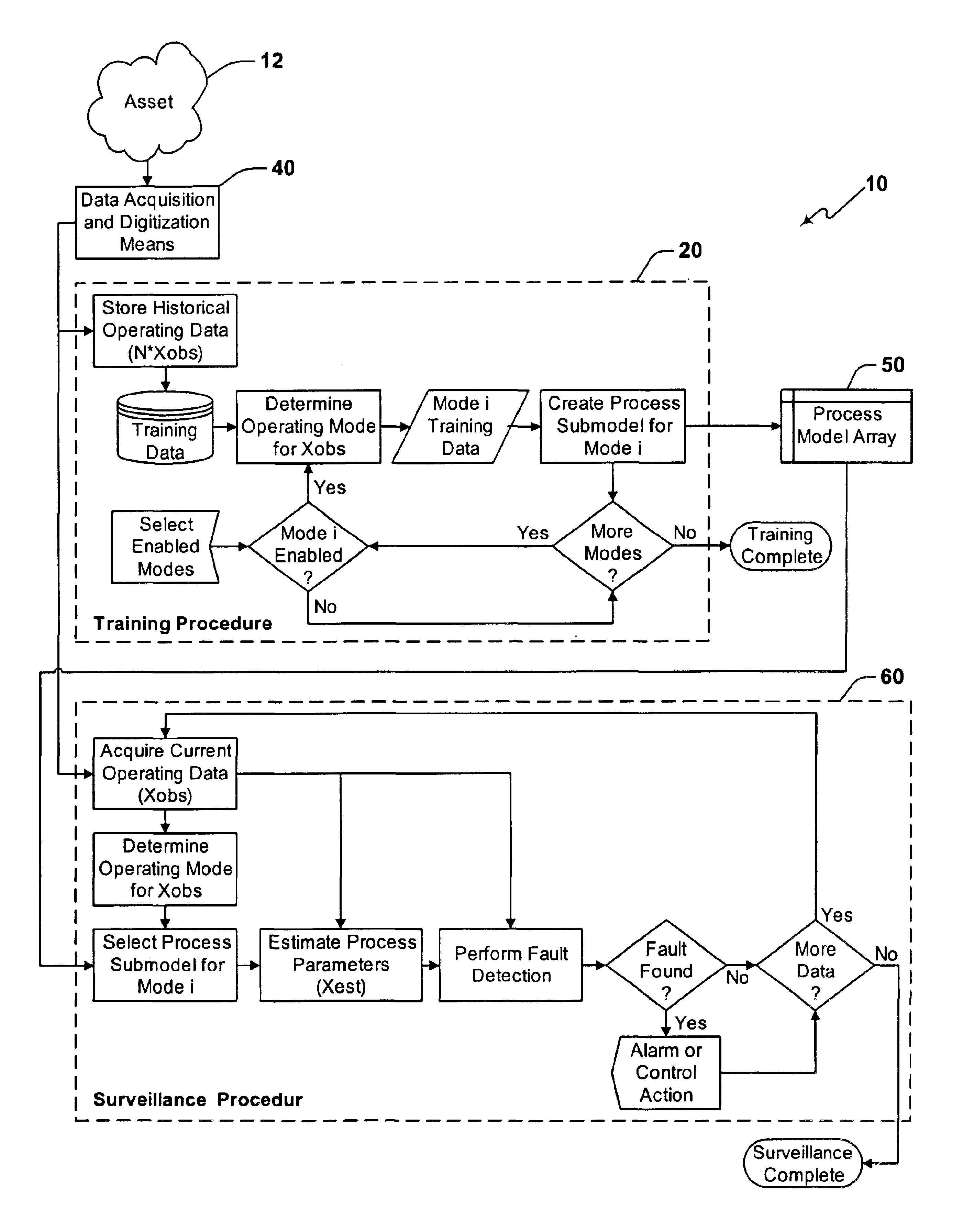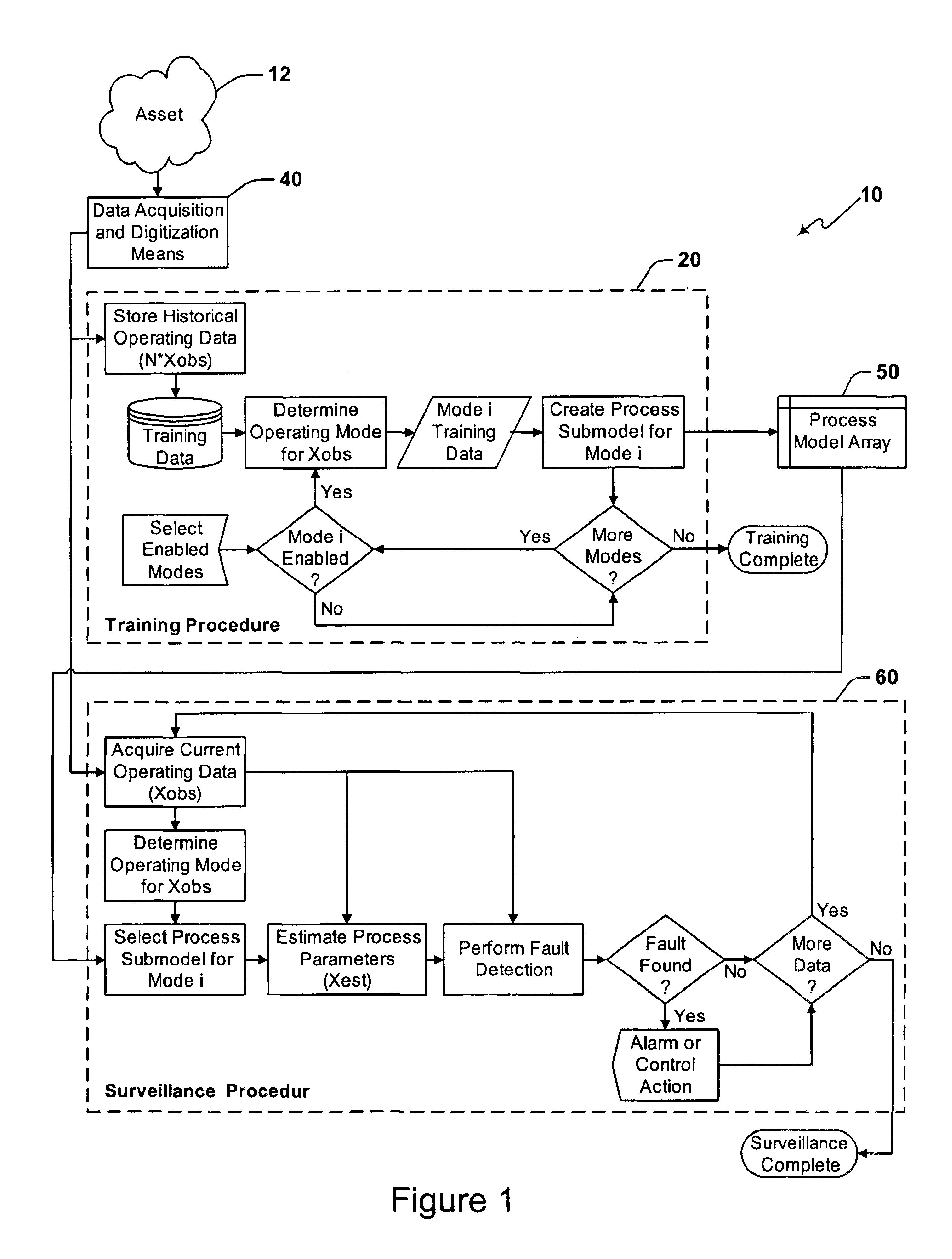Surveillance system and method having parameter estimation and operating mode partitioning
a surveillance system and operating mode technology, applied in the direction of distance measurement, navigation instruments, instruments, etc., can solve the problems of large number of false alarms, most conventional methods cannot perceive the onset of a process disturbance or sensor signal error, and most conventional methods also do not account for the relationship between. , to achieve the effect of improving surveillance performan
- Summary
- Abstract
- Description
- Claims
- Application Information
AI Technical Summary
Benefits of technology
Problems solved by technology
Method used
Image
Examples
Embodiment Construction
[0043]Considering the drawings, wherein like reference numerals denote like parts throughout the various drawing figures, reference numeral 10 is directed to the system according to the instant invention.
[0044]In its essence, and referring to FIG. 1, the system 10 is generally comprised of a method and apparatus for performing high sensitivity surveillance of a wide variety of assets including industrial, utility, business, medical, transportation, financial, and biological processes and apparatuses wherein such process and / or apparatus asset preferably has at least two distinct modes or domains of operation (e.g., transient and steady state modes or domains). The system includes a training procedure 20 wherein a parameter estimation process model array 50 of an asset 12 (e.g., a process and / or apparatus) is learned from historical operating data using at least one of a plurality of computer-assisted techniques. Historical operating data includes a set of observations from normal op...
PUM
 Login to View More
Login to View More Abstract
Description
Claims
Application Information
 Login to View More
Login to View More - R&D
- Intellectual Property
- Life Sciences
- Materials
- Tech Scout
- Unparalleled Data Quality
- Higher Quality Content
- 60% Fewer Hallucinations
Browse by: Latest US Patents, China's latest patents, Technical Efficacy Thesaurus, Application Domain, Technology Topic, Popular Technical Reports.
© 2025 PatSnap. All rights reserved.Legal|Privacy policy|Modern Slavery Act Transparency Statement|Sitemap|About US| Contact US: help@patsnap.com



